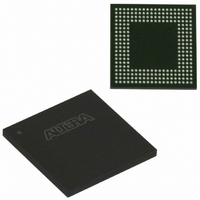EPM570ZM256C6N Altera, EPM570ZM256C6N Datasheet - Page 13

EPM570ZM256C6N
Manufacturer Part Number
EPM570ZM256C6N
Description
IC MAX IIZ CPLD 570 LE 256-MBGA
Manufacturer
Altera
Series
MAX® IIr
Specifications of EPM570ZM256C6N
Programmable Type
In System Programmable
Delay Time Tpd(1) Max
9.0ns
Voltage Supply - Internal
1.71 V ~ 1.89 V
Number Of Logic Elements/blocks
570
Number Of Macrocells
440
Number Of I /o
160
Operating Temperature
0°C ~ 85°C
Mounting Type
Surface Mount
Package / Case
256-MBGA
Voltage
1.8V
Memory Type
FLASH
Number Of Logic Elements/cells
570
Lead Free Status / RoHS Status
Lead free / RoHS Compliant
Features
-
Other names
544-2453
Available stocks
Company
Part Number
Manufacturer
Quantity
Price
Company:
Part Number:
EPM570ZM256C6N
Manufacturer:
ALTERA
Quantity:
736
Chapter 2: MAX II Architecture
Logic Array Blocks
Figure 2–4. DirectLink Connection
LAB Control Signals
© October 2008 Altera Corporation
DirectLink interconnect from
left LAB or IOE output
Each LAB contains dedicated logic for driving control signals to its LEs. The control
signals include two clocks, two clock enables, two asynchronous clears, a
synchronous clear, an asynchronous preset/load, a synchronous load, and
add/subtract control signals, providing a maximum of 10 control signals at a time.
Although synchronous load and clear signals are generally used when implementing
counters, they can also be used with other functions.
Each LAB can use two clocks and two clock enable signals. Each LAB’s clock and
clock enable signals are linked. For example, any LE in a particular LAB using the
labclk1 signal also uses labclkena1. If the LAB uses both the rising and falling
edges of a clock, it also uses both LAB-wide clock signals. Deasserting the clock
enable signal turns off the LAB-wide clock.
Each LAB can use two asynchronous clear signals and an asynchronous load/preset
signal. By default, the Quartus II software uses a NOT gate push-back technique to
achieve preset. If you disable the NOT gate push-back option or assign a given register
to power-up high using the Quartus II software, the preset is then achieved using the
asynchronous load signal with asynchronous load data input tied high.
With the LAB-wide addnsub control signal, a single LE can implement a one-bit adder
and subtractor. This saves LE resources and improves performance for logic functions
such as correlators and signed multipliers that alternate between addition and
subtraction depending on data.
The LAB column clocks [3..0], driven by the global clock network, and LAB local
interconnect generate the LAB-wide control signals. The MultiTrack interconnect
structure drives the LAB local interconnect for non-global control signal generation.
The MultiTrack interconnect’s inherent low skew allows clock and control signal
distribution in addition to data.
circuit.
interconnect
DirectLink
to left
Interconnect
Local
Logic Element
Figure 2–5
LE0
LE1
LE2
LE3
LE4
LE5
LE6
LE7
LE8
LE9
LAB
shows the LAB control signal generation
DirectLink
interconnect
to right
DirectLink interconnect from
right LAB or IOE output
MAX II Device Handbook
2–5














